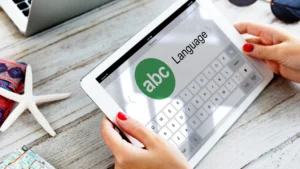Although English remains one of the most widely spoken languages internationally, Irish—also known as Gaelic—holds a significant place in Ireland’s cultural and linguistic identity. In fact, it is an official language alongside English in the Republic of Ireland and is used in official documents, media, educational institutions, and public signage.
If you need to translate content from English to Irish for academic, commercial, tourism, or institutional purposes, you may have wondered what kind of English-to-Irish translator to use. Is an online translator sufficient, or is it better to turn to a professional translation service?
In this article, we present the best available resources and offer practical recommendations for obtaining accurate translations tailored to each context.
When to use an online translator vs. a professional translator
Online translators have gained enormous popularity due to their accessibility, speed, and the fact that they are free to use. Tools like Google Translate or DeepL provide instant translations in a matter of seconds. But are they truly reliable when it comes to a language like Irish?
The answer depends on how you intend to use the translated text.
| Online Translator | Professional Translation |
|---|---|
| ✅ Useful for getting a general idea of a text. | ✅ Recommended for content that will be published or shared externally. |
| ✅ Suitable for short, simple phrases with no cultural context. | ✅ Ensures grammatical, terminological, and stylistic accuracy. |
| ✅ Handy for students to practice or check expressions. | ✅ Adapts the content to cultural and linguistic context. |
| ✅ Great for informal, personal use. | ✅ Essential for technical, legal, commercial, or creative texts. |
| ❌ Not reliable for idioms, cultural nuances, or complex expressions. | ✅ May require a higher investment, but delivers quality and professionalism. |
| ❌ Risk of misinterpretation in specialized content. | ✅ Enhances brand image, credibility, and audience trust. |
Irish is a language with a grammatical structure that is very different from English, and it carries a unique cultural richness that is not always well interpreted by machine translators. So, when the reputation of a brand or the precise understanding of content is at stake, it is highly recommended to rely on professional translation experts.
The best English to Irish translators on the market
If you decide to start with an online translator for a first pass, here are some of the best tools currently available for English-Irish translation:
- Google Translate: While its accuracy with Irish is still limited, it can be useful for simple words and phrases. It also has the advantage of offering voice pronunciation and context-based translations.
- Teanglann.ie: This portal is a gem for those working with Irish, developed by the organization Foras na Gaeilge, which promotes the Irish language. It includes a comprehensive English-Irish dictionary and integrated grammars, making it ideal for students and professionals who need lexical precision.
- Foclóir.ie: Another official resource offering translations between English and Irish, along with information on the usage and grammar of words. It is very useful for technical or academic translations.
- Glosbe: A collaborative tool that enables you to consult translations made by other users. While not always accurate, it offers real-world usage examples that can help you understand the context.
Tips for accurate English to Irish translations
Whether you decide to use an online translator or opt for professional translation, here are some tips that can help you achieve greater accuracy and naturalness in the final result.
Define the context of your text
Irish has dialectical variations depending on the region (Ulster, Connacht, Munster, and others), so if your target audience is located in a specific area, this can influence the linguistic choices. Additionally, translating a menu, a tourist guide, or a legal document are very different tasks, so knowing the type of content you are translating is key to ensuring a high-quality result.
Avoid using idioms without context
Machine translators often struggle with idiomatic expressions, sayings, and turns of phrase that cannot be translated literally. For example, the phrase “break the ice” translated literally into Irish can lose its meaning entirely and fail to convey the original intent. Machine translations often do not capture the cultural nuances or tone of these phrases. In these cases, a professional translation is indispensable, as a human translator is able to adapt the content to the target language, considering not only the words but also the cultural and emotional context. This ensures that the message is understood as naturally and accurately as possible.
Use reliable sources
If you decide to verify a translation on your own, it is important to turn to official and reliable sources such as Teanglann or Foclóir, which offer specialized dictionaries and resources. These platforms not only provide word translations but also include explanations on Irish grammar and usage, which is essential for achieving an accurate translation. It is also recommended to compare several sources to ensure that the term chosen fits the context. By contrasting different options, you can gain a clearer perspective and ensure that the message remains faithful to the original.
Review the tone and communicative intent
A correct translation not only conveys words but also the tone, intent, and emotion of the original message. This is especially important in marketing, institutional, or educational content. If this is your case, it is ideal to work with a professional team experienced in localization and cultural adaptation.
As we have seen, the ideal English-Irish translator will depend on the intended use of the translation. For informal texts or personal use, online translators can be a useful and quick tool. However, when it comes to communicating precisely, conveying a professional image, or respecting the cultural context of the language, the best option is always to rely on a professional translation.
If you are working on a multilingual project, need to adapt your content to the Irish cultural reality, or simply want to ensure your message is delivered clearly, Linguaserve offers comprehensive translation solutions in over 100 language combinations, including English-Irish.
We work with native translators who are experts in each subject area, and our advanced technology ensures precision, consistency, and quality in every project. Discover more about our professional translation services, which combine human expertise with linguistic technology to help you reach further with your words.



